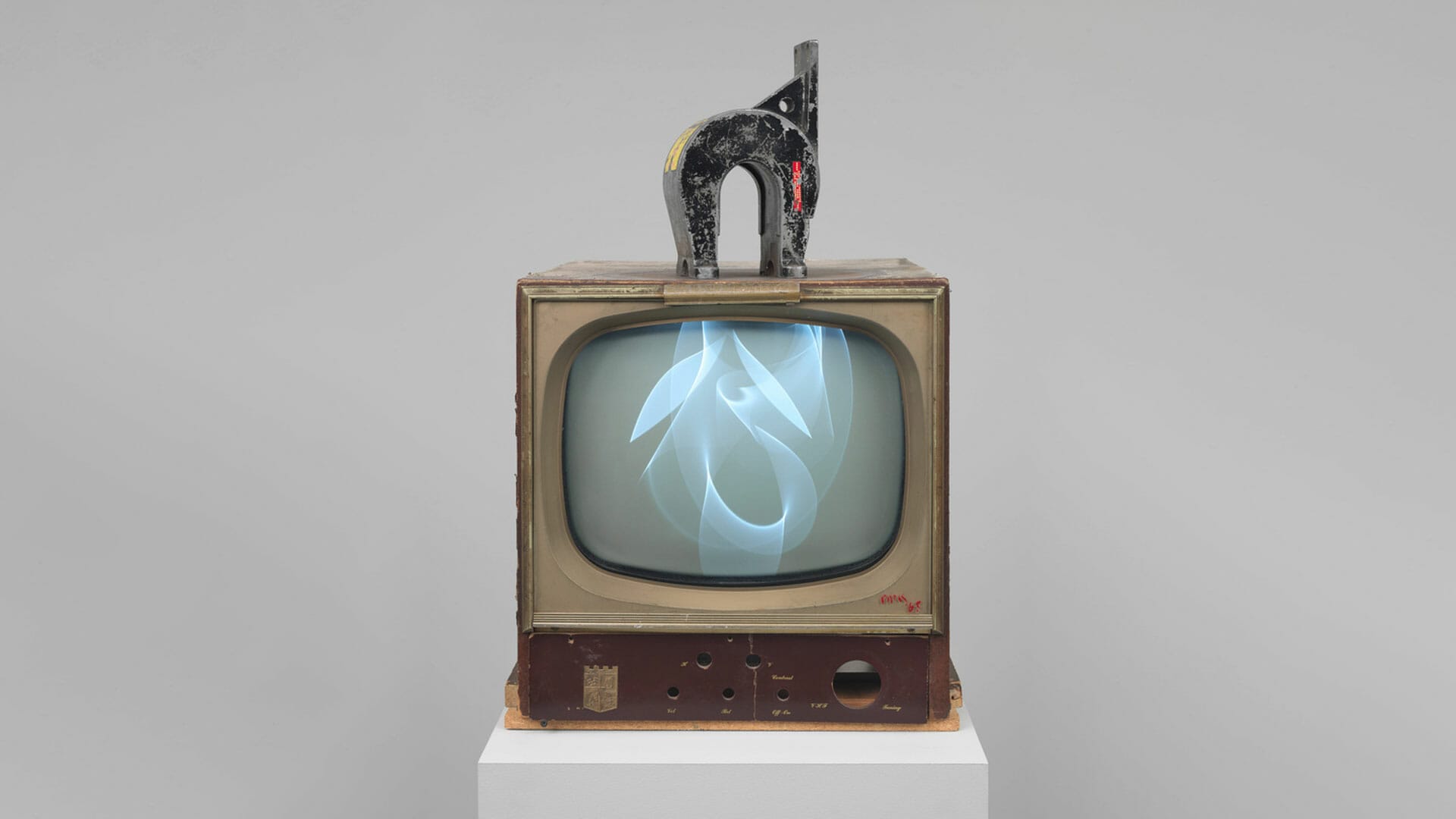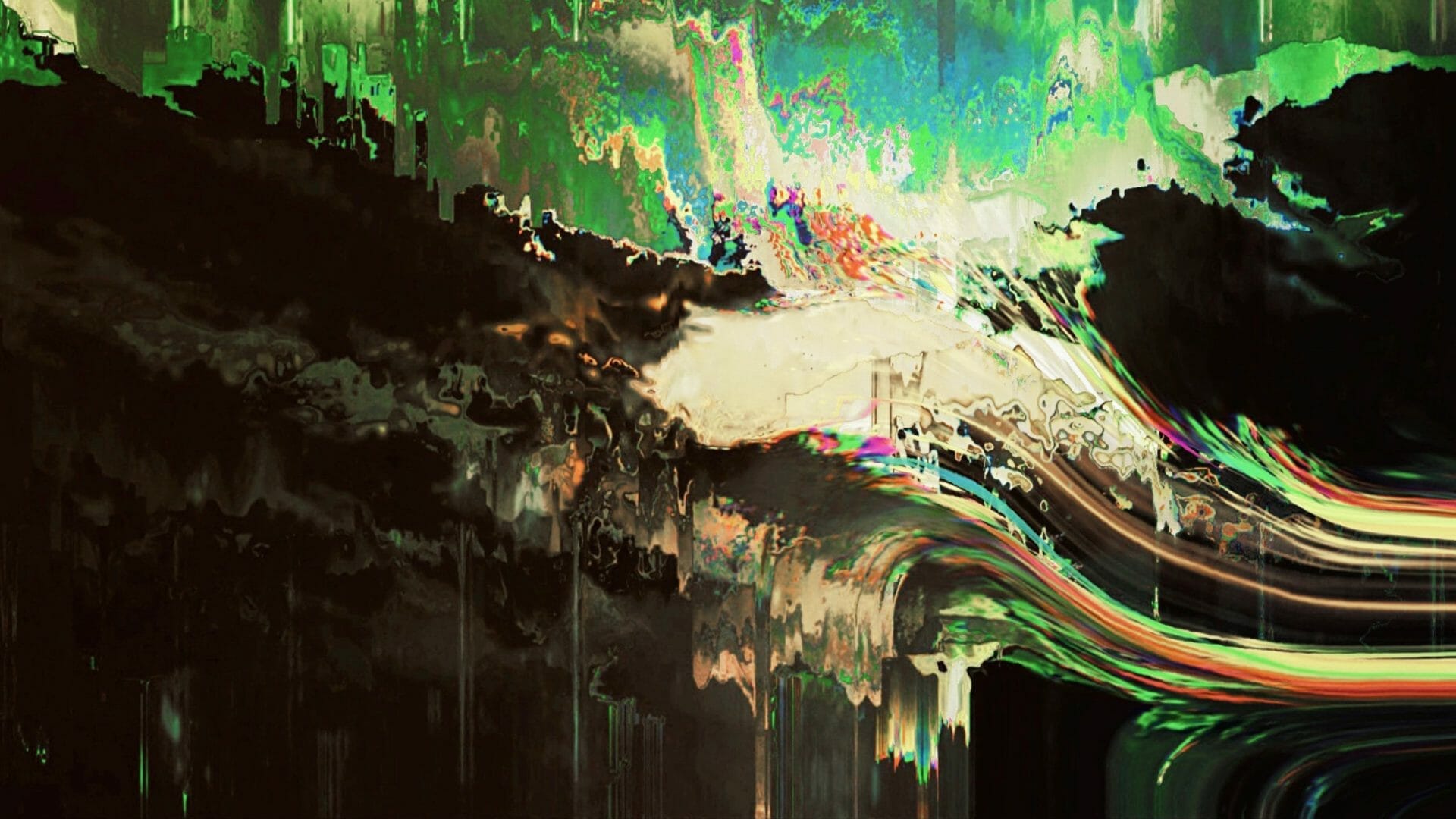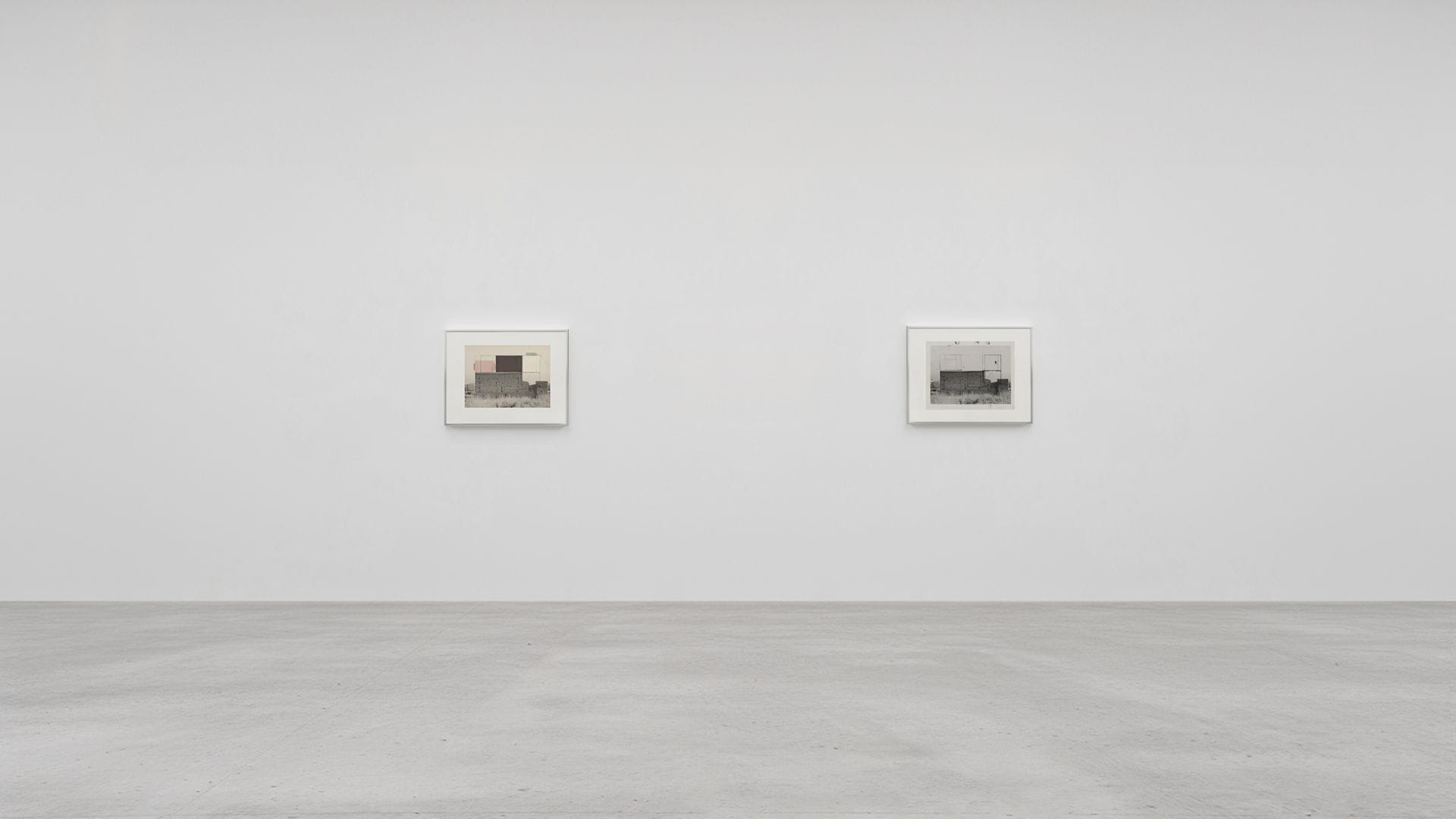
Distorted Visions: Artists Shaping Glitch Art
In the early 20th century, technological imperfections, exemplified by the white noise on a detuned TV or the scrambled syntax of a corrupted file, would have been brushed aside as mere mistakes. However, in today’s world, these ‘errors’ are celebrated and have been elevated to an art form affectionately known as glitch art. In the following piece, we’ll traverse through the evolution of this art form and spotlight artists who have made profound contributions to the Glitch Art Movement.
What is Glitch Art?
At its core, glitch art emerges as a post-digital movement, taking a critical stance against the flawless digital utopias touted by new media. Though it might first present itself as a mere byproduct of technological mishaps, it is underpinned by a deeper philosophy rooted in spontaneity, intention, and subversion. This aesthetic, rather than shunning imperfection, embraces it and thrives on unpredictability, actively seeking out the ‘mistakes’ borne of technology.
And beyond its visual characteristics, which include jarring pixelations, vivid color spectrums, and dreamlike distortions, the realm of glitch isn’t confined solely to the visual. Echoes of its influence also resonate in the music world, where artists play with electronic disruptions, leading to the evolution of glitch music, pioneered by artists such as Kim Cascone and Oval.
The myriad techniques that craft glitch visuals are as eclectic as the outcomes they forge. Whether it’s databending, datamoshing, or the nuanced utilization of hex editors to intentionally “break” file formats, the genius lies as much in the journey as in the destination.
Glitch Art: A Brief Chronological Overview
The Genesis: 1960s – 1970s
Before the digital boom, Glitch Art’s foundations were already being laid in the 1960s. Pioneers like Nam June Paik paved the way: his 1965 work “Magnet TV“, where he manipulated a television using a magnet to introduce distortions, stands as an early testament to the genre’s potential.
The Digital Push: 1990s
As the world transitioned into the digital era, the 1990s became a turning point. The rise of personal computers and groundbreaking software like Adobe Photoshop offered artists revolutionary tools for intentional glitch creation. Concurrently, the term “glitch”, denoting unplanned software and electronic mishaps, found its place in popular lexicon.
The Growth of Collectives: Late 1990s – 2000s
Building upon the momentum, the late 1990s and 2000s saw Glitch Art evolving into a collective movement. Groups like “Antiorp” and “Notendo” took center stage, not only defining but also championing the art form. These collectives became beacons, illuminating the beauty of digital imperfections and offering platforms for artistic experimentation and collaboration.
The Age of Social Media: 2010s
Come the 2010s, the digital landscape transformed again, this time with the surge of social media platforms like Tumblr. These platforms played catalyst to Glitch Art’s explosion in popularity. Artists such as Rosa Menkman and Phillip Stearns harnessed the power of these platforms, sharing their unique glitch aesthetics and delving into the deeper philosophy of the art.
Worth mentioning, is Phillip’s “Year of the Glitch,” a compelling exploration of the unpredictable and often overlooked artifacts of digital technology. Every day for a year, Stearns delved into the multifaceted universe of glitches, presenting new manifestations through images, videos, or sound files. These outputs, sourced from manipulated digital tools like cameras, scanners, corrupted files, and disrupted digital transmissions, serve as a testament to his belief that glitches aren’t merely errors. Instead, they’re gateways, revealing hidden dimensions within familiar technologies.
But also seminal texts such as “The Glitch Manifesto” by Rosa Menkman and “Glitch: Designing Imperfection” by Iman Moradi — profound works that delve beyond mere aesthetic appreciation, exploring glitch’s profound implications for digital society, hacker ethics, and its insightful critique of mainstream media.
Artists at the Forefront of the Glitch Art Movement
Adrian Cain aka drain
A leading glitch artist, Adrian “drain” Cain was born in Oklahoma but now lives in Northwest Arkansas. With multi-layered compositions encompassing everything glitch art has to offer, drain’s art unites vibrant colors, discursive patterns, intricate textures, and a passion for the unconventional. Using tools like Audacity and GLIC codec, and through his inspiring collages of glitch art techniques, he interprets the digital aspect of the human body as raw and compressed imagery.
Drea Jay aka Empress Trash
From Iowa to Mexico City, Empress Trash has been on a quest for artistic and personal autonomy. Having showcased her crypto art worldwide, from Sotheby’s to Miami Art Basel, her work delves into themes of femininity, consumerism, and the subconscious. Drawing from her turbulent past, Empress Trash weaves narratives that challenge, inspire, and captivate, all while exploring the myriad layers of human experience.
INA VARE
Latvian artist INA VARE journeys from analog to digital, capturing the essence of both worlds. Recognized in the CryptoArt space, her style reflects nostalgic video aesthetics infused with glitch elements. Her works range from abstract to parodic, always maintaining a personal touch. INA has showcased globally, from Europe to the USA, recently making waves at Sotheby’s New York. With deep roots in the Glitch and Death Punk schools of CryptoArt, she’s a force in the digital art movement.
James Bloom aka Crashblossom
London artist James Bloom, also known as Crashblossom, merges digital abstraction with pioneering blockchain innovations. His artworks, like the ‘BURNER’ series, capture the fluidity of digital networks and their impact on our sense of now. By making artworks responsive to market activities, he critiques the NFT space. Having exhibited globally, from Art Basel to Sotheby’s, Bloom also excels as a Creative Director, winning accolades at Cannes Lions and more.
Lance Weiler aka Culture Hacker
Lance Weiler aka CultureHackeris a storyteller, media artist, entrepreneur and thought leader that has been innovating at the forefront of entertainment for over twenty years. The essence of his artistry lies in spontaneity and discipline, as evidenced by his trailblazing project initiated in 2021, the ambitious “Everyday” project, through which he pledged to produce a unique art piece each day. As he moved through this endeavor, he recognized the potential of digital art, releasing his creations as both NFTs and tangible prints. By strategically choosing Instagram as his display arena, Lance emphasizes not just the power of his art but also the crucial importance of nurturing authentic artist-audience relationships in today’s interconnected world.
Martina Menegon
Rooted in Vienna’s vibrant art scene, Italian artist Martina Menegon crafts immersive experiences that question the boundaries between the virtual and the physical. Delving into the realms of Interactive and Extended Reality Art, her avant-garde creations are a testimony to the evolving essence of self-portraiture in the digital age. With a portfolio that’s graced global platforms from the MAK Museum to Francisco Carolinum Linz, Martina also champions digital arts through /afk, a collective she co-directs. As a lecturer at Transmedia Art and Vice Director at CIVA Festival, she’s at the forefront of pioneering the digital arts dialogue.
N-LITE aka Diskette Park
A digital art pioneer, Diskette Park captures the zeitgeist of the 2014 Tumblr wave. He’s a symphonist of glitch, generative visuals, and the nostalgia-drenched vaporwave. With ventures that span from the tactile grain of VHS to the pixelated charm of retrocomputing, Diskette Park crafts auditory experiences that waltz harmoniously with his visual epics, immersing global audiences in a synesthetic embrace.
Norman Harman
Norman Harman, a prominent figure in Edinburgh’s art scene, expertly combines traditional painting with cutting-edge digital techniques. A graduate of Edinburgh College of Art and recipient of the RSA Latimer Painting Prize, Harman’s work consistently explores the fusion of paint and digital elements. His pieces often feature detailed over-paintings on digital bases, resulting in a unique blend of classic and corrupted visuals. Currently, Harman is expanding his repertoire by investigating AI, blockchain, and the vast field of generative art, showcasing the dynamic shifts in today’s art world.
Patrick Amadon
Patrick Amadon, based in the US, seamlessly transitioned from traditional painting to pioneering glitch artistry. Known for his distinct fusion of graffiti and glitch, Amadon manipulates digital images, crafting pieces that both fascinate and challenge. Steeped in counter-cultural themes, his artistry probes society’s shadows, pushing the boundaries of accepted norms. Venturing into digital art in 2012, his signature technique — corrupting and merging paintings and photographs into hypnotic animated loops — has captivated collectors and artists alike.
Poppel
Once a biologist, Poppel seamlessly blends geek culture with artistic expression. As a multimedia artist, his creations cross genres, merging aesthetics from varied fields. Poppel’s passion is evident in every piece, exploring the fascinating intersections of pop culture, art, and science. With a foot in both analytical and artistic realms, Poppel crafts captivating narratives that intrigue and inspire.
Sabato Visconti
Based in Western Massachusetts, Brazilian artist Sabato Visconti blends the worlds of new media art and photography. A graduate of Amherst College, he initially pursued Political Science. However, a twist of fate in 2011 led him down an unexpected path: a faulty memory card began transforming his JPEG files, introducing him to the world of glitch art. This serendipitous event spurred Sabato to deeply explore how digital processes, combined with evolving online platforms and machine intelligence, shape modern imaging practices. Through his work, he critically examines the broader implications of these technologies, highlighting societal concerns such as surveillance and system-induced environmental disturbances.
Sean Luke
Rooted in New York’s vibrant artscape, Sean Luke bridges the city’s rich artistic lineage with its present. Armed with a three-decade artistic journey and a spirited ethos of “I exist,” Sean channels raw authenticity. Employing tools like Aseprite, he juxtaposes vintage vibes with present-day perspectives in his minted masterpieces. Every piece is an invitation to a dimension where unbridled creativity reigns supreme.
TACHYONS+
Based in North Florida, TACHYONS+, aka Logan Owlbeemoth, transforms 80’s and 90’s electronics into cutting-edge video art tools. From music videos to graphic design, these devices bridge the gap between historic circuitry and the future of visual art. With a core belief in the transformative power of video synthesis, glitch, and psychedelic visuals, TACHYONS+ is redefining perceptions of reality through art.
Thomas Collet aka Chepertom
Hailing from Brest, France, Thomas Collet, better known as Chepertom, subverts digital imagery’s norms. Grounded in diverse artistic experiences from Strasbourg to Brussels, he finds beauty in digital imperfections, championing glitch art. By manipulating video data, Chepertom unveils the obscured processes of digital image production, spotlighting the often-hidden mechanics behind our digital realities.
Beyond the Glitch: A Closing Frame
Glitch Art, as a distinct form, challenges our preconceptions about digital perfection, thereby illuminating the ephemeral nature of digital media and celebrating the serendipity of unforeseen outcomes. Building on this, the artists showcased not only boldly redefine our understanding of visual aesthetics but also prompt us to contemplate the deeper essence of art and its digital representation.
Their works serve as a bridge, linking the virtual and the real, drawing attention to the inherent vulnerabilities in the systems we so heavily rely upon — and ultimately, the beauty.
For, in unveiling these imperfections, Glitch Art stands as a testament to the beauty interwoven with chaos, the allure of the unexpected, and the ever-evolving nature of digital expression.
fakewhale
Founded in 2021, Fakewhale advocates the digital art market's evolution. Viewing NFT technology as a container for art, and leveraging the expansive scope of digital culture, Fakewhale strives to shape a new ecosystem in which art and technology become the starting point, rather than the final destination.
You may also like

In conversation with culturehacker
During this episode of Fakewhale Live, diewiththemostlikes chats about digital art with renowned dig
Nick Farhi, Rêverie at Stems Gallery Paris, Paris
“Rêverie” by Nick Farhi, at Stems Gallery Paris, Paris, 4th of April 2024 – 1st o
Fakewhale Solo Series presents Persistence of Form by Gary Edward Blum
On Wednesday, May 22nd, Fakewhale proudly presents “Persistence of Form”, a Fakewhale Solo Serie







